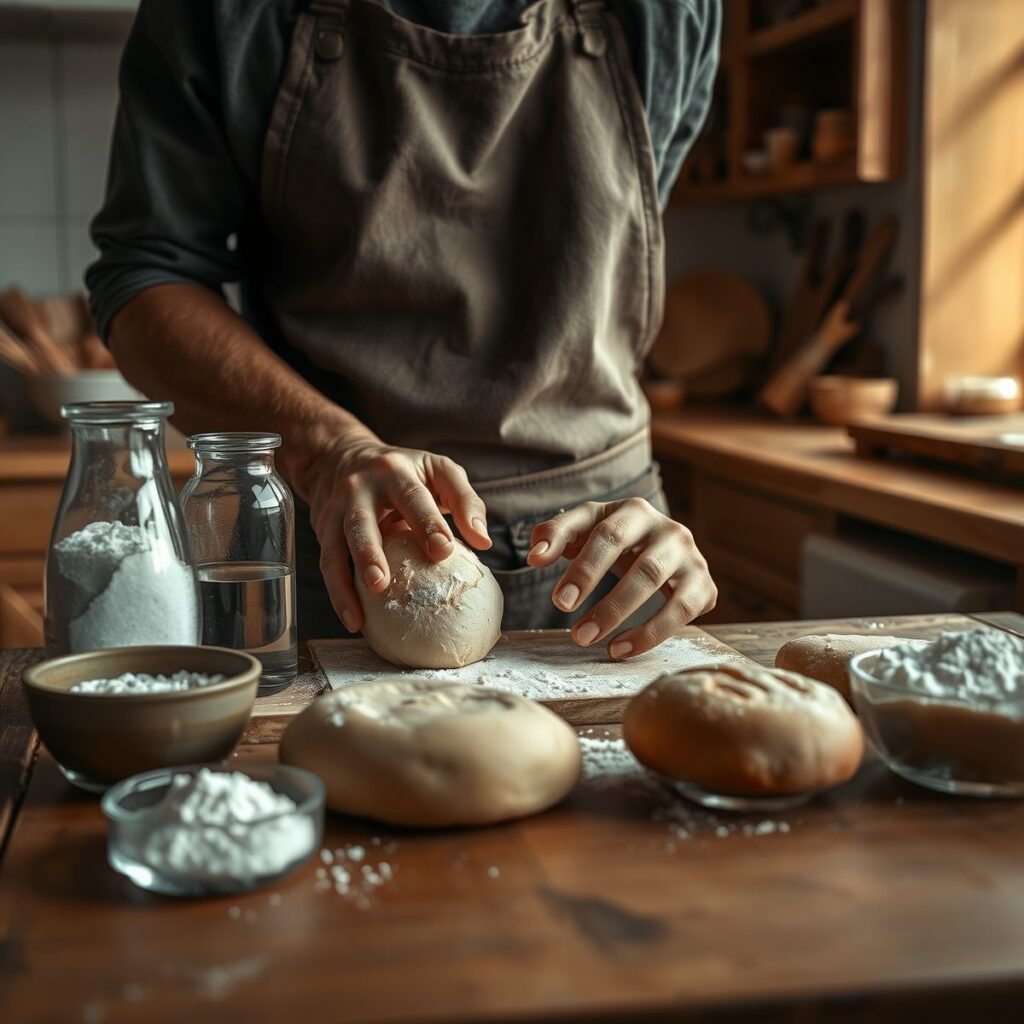Índice do Conteúdo
- Understanding Artisan Bread Baking
- The Tiny Kitchen Upgrade with Big Impact
- Essential Ingredients for Artisan Bread
- Tools You Need for Baking Artisan Bread
- The Art of Dough Mixing
- Fermentation Techniques for Flavor Development
- Shaping Your Dough
- Creating Steam in the Oven
- Baking Your Artisan Bread
- Storing Your Artisan Bread
Understanding Artisan Bread Baking
Artisan bread baking is the method of creating hand-crafted loaves that emphasize quality ingredients, traditional techniques, and an artisanal approach. This process is characterized by a focus on the natural fermentation of dough, often using sourdough starters or long fermentation times. The end result is a crusty, flavorful bread that captures the essence of homemade goodness. Understanding the fundamental principles of artisan bread baking is crucial for anyone looking to replicate professional results at home.
Essential Ingredients for Artisan Bread
When diving into artisan bread baking, the selection of ingredients plays a vital role in the overall quality of the bread. High-quality flour, water, salt, and yeast are the primary components. Bread flour, which has a higher protein content compared to all-purpose flour, is typically recommended as it helps achieve a better rise and structure. Additionally, using filtered water can prevent any unwanted flavors or chemicals from interfering with the dough’s fermentation process.
Tools You Need for Baking Artisan Bread
Equipping your kitchen with the right tools can significantly enhance your artisan bread baking experience. Essential tools include a mixing bowl, a bench scraper, a dough thermometer, a baking stone or steel for even heat distribution, and a Dutch oven for creating steam while baking. A bread lame is also useful for scoring the dough, which allows for expansion during baking. Having these tools will help you achieve professional-level results in your home kitchen.
The Art of Dough Mixing
The mixing process is crucial in artisan bread baking, as it lays the foundation for the dough’s structure. Begin by combining the ingredients in a mixing bowl, using your hands or a dough hook to mix until a shaggy dough forms. The goal is to develop gluten, which gives the bread its chewy texture. This can be achieved through various techniques, including the stretch and fold method, which allows for gentle gluten development without overworking the dough.
Fermentation Techniques for Flavor Development
Fermentation is a critical stage in artisan bread baking that contributes to the flavor and texture of the final product. For an authentic artisan loaf, consider using a slow fermentation method, allowing the dough to rise in a cool environment for an extended period. This slow rise encourages the development of complex flavors and a chewy crust. Additionally, incorporating a preferment, such as a biga or poolish, can enhance the bread’s flavor profile even further.
Shaping Your Dough
Shaping the dough is an art that requires practice and precision. Once the dough has completed its bulk fermentation, gently transfer it to a floured surface. Use your hands to shape the dough into a round or oval loaf, depending on your preference. The key is to create tension on the surface of the dough, which will help it rise beautifully in the oven. Ensure that you allow the shaped dough to rest before baking, as this final proofing stage is critical for achieving an open crumb structure.
Creating Steam in the Oven
One of the secrets to achieving a perfect crust in artisan bread baking is the creation of steam during the initial baking phase. This can be accomplished by placing a Dutch oven in the oven while it preheats. The steam generated inside the Dutch oven keeps the crust from forming too quickly, allowing the bread to expand and rise. If you prefer not to use a Dutch oven, you can also create steam by placing a pan of hot water in the oven alongside your bread.
Baking Your Artisan Bread
The baking process is where all your efforts come together. Preheat your oven to a high temperature, typically around 450°F (232°C), and place your dough inside. Bake until the crust is golden brown and sounds hollow when tapped on the bottom. The internal temperature of the bread should reach around 200°F (93°C) for optimal doneness. Allow the bread to cool on a wire rack to help maintain its crusty exterior.
Storing Your Artisan Bread
Proper storage is essential for maintaining the freshness and quality of your artisan bread. To keep your bread crusty, store it at room temperature in a paper bag or a bread box to allow for air circulation. Avoid plastic bags, as they trap moisture and can lead to a soggy crust. If you need to store the bread for an extended period, consider freezing it to preserve its quality, slicing it beforehand for convenience.



